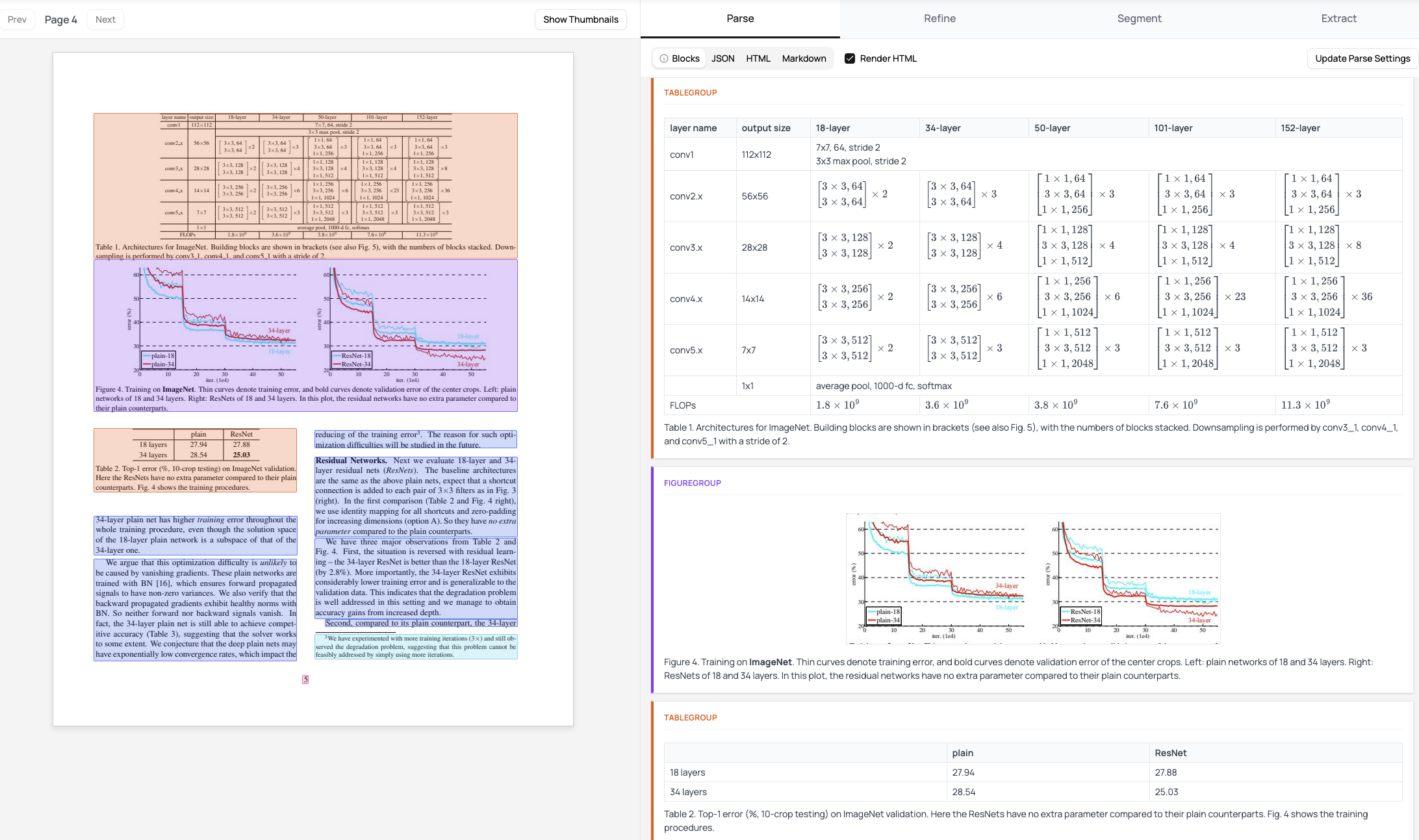Scientific PDF with Complex Tables and Figures
This example highlights how Datalab accurately parses a scientific document containing multi-level tables, matrices, and embedded charts — a notoriously difficult test for document understanding systems.
Blocks View
Displays structured document elements — tables, figures, paragraphs — as modular “blocks,” each derived from Datalab’s JSON output. Every block includes citations that map extracted text or data back to exact regions in the original PDF, ensuring full traceability. These blocks can be programmatically accessed, reordered, or filtered for downstream workflows such as model training, analysis, or dataset creation.

Markdown Output (with LaTeX)
Provides a clean, human-readable rendering of the paper that preserves structure, mathematical notation, and figure captions. Tables with merged headers are reconstructed with correct alignment and hierarchy, while equations are output as LaTeX, enabling accurate reproduction of formulas in downstream systems or markdown renderers.

Scientific PDFs combine dense, multimodal content that traditional OCR systems struggle to interpret.
Datalab’s document parsing models are trained to handle these patterns holistically: preserving layout, reconstructing logical relationships, and maintaining a tight link between every extracted element and its origin. This enables high-fidelity scientific data extraction — suitable for research reproducibility, AI training pipelines, and knowledge graph construction.






